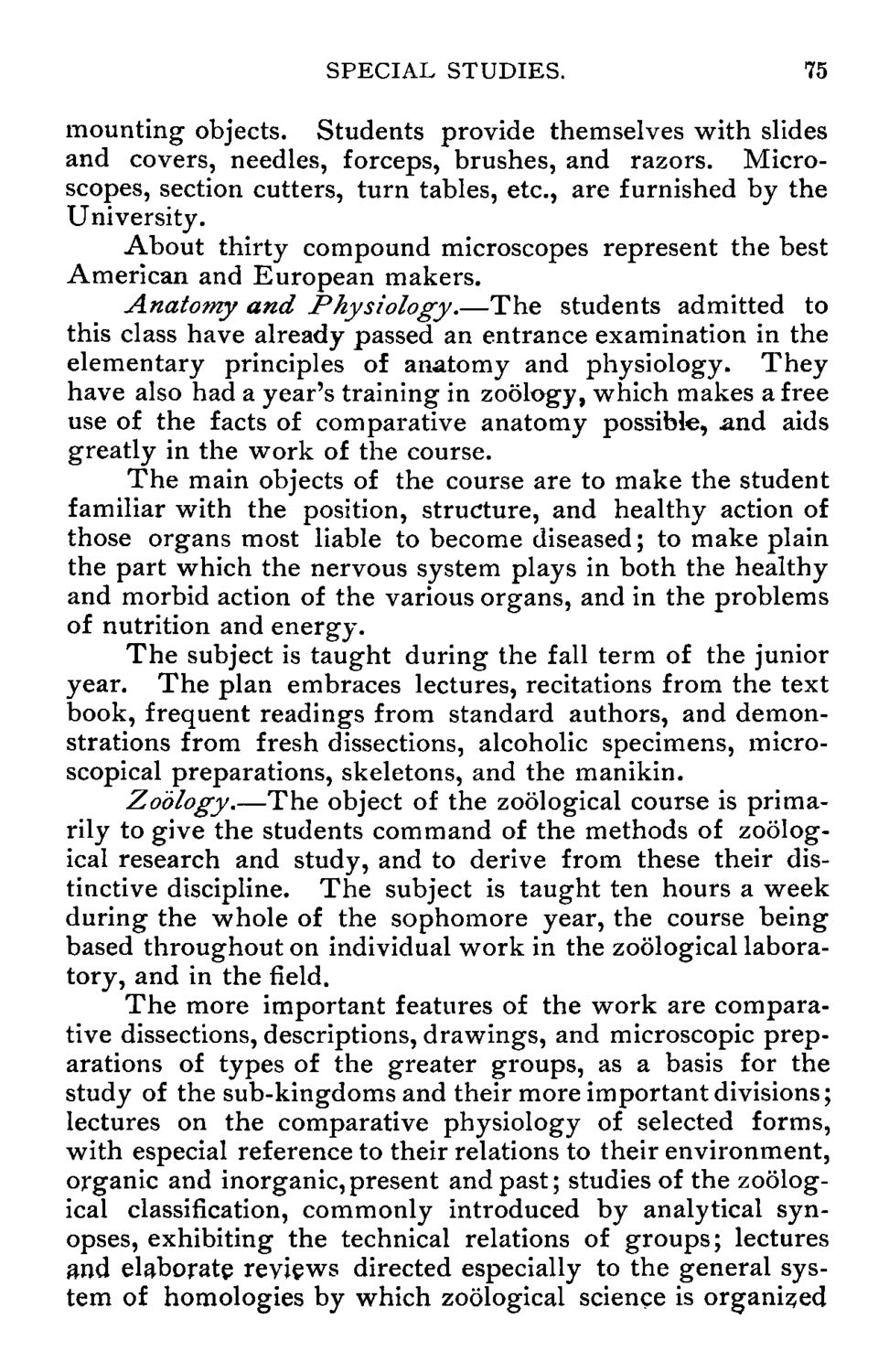| |
| |
Caption: Course Catalog - 1889-1890
This is a reduced-resolution page image for fast online browsing.

EXTRACTED TEXT FROM PAGE:
SPECIAL STUDIES. 75 mounting objects. Students provide themselves with slides and covers, needles, forceps, brushes, and razors. Microscopes, section cutters, turn tables, etc., are furnished by the University. About thirty compound microscopes represent the best American and European makers. Anatomy and Physiology.—The students admitted to this class have already passed an entrance examination in the elementary principles of anatomy and physiology. They have also had a year's training in zoology, which makes a free use of the facts of comparative anatomy possible, and aids greatly in the work of the course. The main objects of the course are to make the student familiar with the position, structure, and healthy action of those organs most liable to become diseased; to make plain the part which the nervous system plays in both the healthy and morbid action of the various organs, and in the problems of nutrition and energy. The subject is taught during the fall term of the junior year. The plan embraces lectures, recitations from the text book, frequent readings from standard authors, and demonstrations from fresh dissections, alcoholic specimens, microscopical preparations, skeletons, and the manikin. Zoology.—The object of the zoological course is primarily to give the students command of the methods of zoological research and study, and to derive from these their distinctive discipline. The subject is taught ten hours a week during the whole of the sophomore year, the course being based throughout on individual work in the zoological laboratory, and in the field. The more important features of the work are comparative dissections, descriptions, drawings, and microscopic preparations of types of the greater groups, as a basis for the study of the sub-kingdoms and their more important divisions; lectures on the comparative physiology of selected forms, with especial reference to their relations to their environment, organic and inorganic,present and past; studies of the zoological classification, commonly introduced by analytical synopses, exhibiting the technical relations of groups; lectures and elaborate reviews directed especially to the general system of homologies by which zoological science is organized
| |